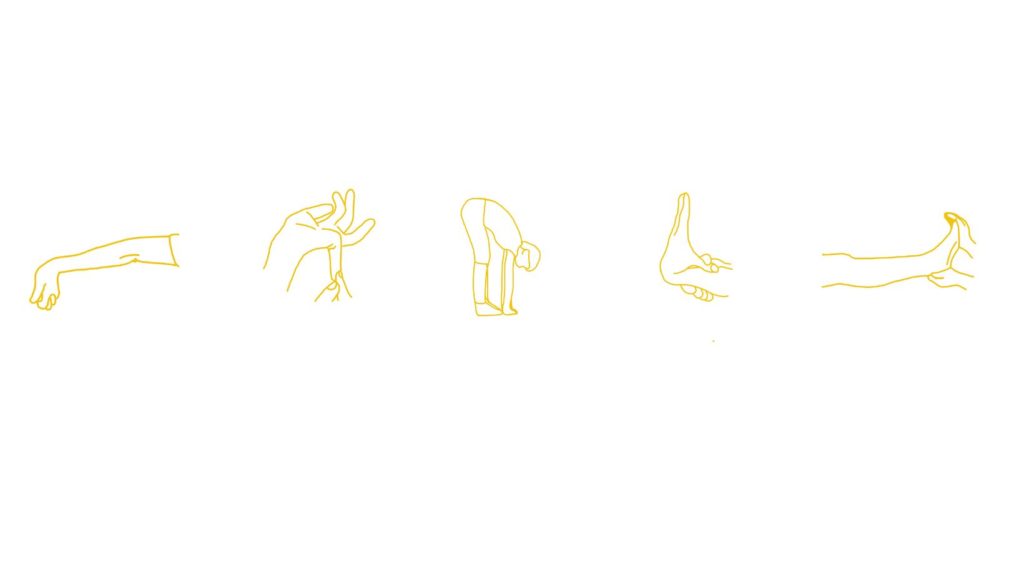If you have ever been to a chiropractor, you have probably had your neck adjusted and thought nothing of it. Maybe it even made you feel better!
Chiropractic adjustments have been shown to give short-term relief to some people sometimes. Any tool that can give relief is a powerful tool to use, especially on people with chronic pain.
When it comes to hypermobility, our connective tissue is built differently. This makes our ligaments lax (like a stretched out rubber band) instead of spring-like. In our upper cervical spine, we have some important structures. This includes our brainstem, spinal cord, nerve roots, and many other important structures. When the ligaments in our neck are lax, we become at risk for something called Craniocervical Instability.
Unfortunately, many chiropractors who perform spinal manipulation are not aware of the consequences that cervical instability may have on a patients quality of life. We are also not well-informed of the impact an HVLA thrust may have on these lax ligaments.
Risk VS Reward
First, what is an HVLA adjustment?
HVLA stands for high-velocity low-amplitude (lots of speed not a lot of force) which is the type of thrust being applied during most chiropractic adjustments. The noise you hear is a bubble forming in fluid surrounding your joints. There are many theories about what is happening neurologically during an adjustment. The general consensus is that there is a short-term neurological effect that may decrease pain and increase range of motion.
For anyone who has experienced pain, you know how powerful this relief can be. It can get you back to work, exercising, and hanging out with loved ones without constantly thinking about the pain. Adjustments can be a great tool, but short term relief is not worth the risk of life-altering changes that can happen by adjusting a hypermobile neck.
There are currently no studies (for obvious reasons) comparing adjustments on hypermobile necks to controls because it would be extremely unethical. As a chiropractic student with CCI and hEDS, I can confirm that cervical adjustments made my symptoms extremely worse. I am very fortunate that nothing affected me long term, but many are not as lucky.
Common Comorbidities Seen In The Hypermobile Community
Ligament laxity is a reason in itself to not get a cervical adjustment, but common comorbidities seen in this population make this even more imperative.
Many of these patients suffer from MCAS, POTS, CCI, Chiari, and other comorbidities that put them at higher risks for things like CSF leaks, intracranial hemorrhage, and other life threatening complications.
Short-term relief is not worth the risk of these complications. Especially when there are other ways to get relief, and many hypermobile patients do not feel relief from spinal manipulation anyway.
What Should Your Provider Look For?
HSD and hEDS are extremely under-diagnosed. It is estimated that 1 in 500 people have hEDS yet only 1 in 5000 are diagnosed. You may seek out a Chiropractor for symptoms of hypermobility like dysautonomia, severe neck pain, headaches, nausea, vision changes, brain fog, and more. In the general population, these are all reasons a Chiropractor may want to adjust someone.
It is important for Chiropractors to remember that their patient may have no idea they are hypermobile, or what hypermobility is. Your Chiropractor should perform the “Beighton Scale” in order to rule out hypermobility. This scale has issues, but it is a good place to start.

A Note To Anyone Practicing Spinal Manipulation
If you suspect your patient is hypermobile and you are unsure how to proceed, please find someone in your area that does. The Ehlers Danlos Society has a list of practitioners who specialize in hypermobility.
Remember, it is okay to say, “I don’t know enough about this, but I will find someone who does”
I get asked constantly “Why would someone with hypermobility ever go to a chiropractor?” Believe it or not, Chiropractors can and SHOULD be doing more than just adjustments. The beautiful thing about chiropractic is our large scope of practice.
Chiropractors should focus on education, symptom relief, self-management, flare-up management, and lifestyle changes with every patient. We are here to guide you in the right direction…we are not here to “fix” you, put your bones back in “alignment” or “unblock” your nervous system. Like any profession, you will find good and bad Chiropractors. The right one will focus on the above, rather than making you feel like you need them to survive.
Safer Options For Hypermobile Bodies
Like we mentioned before, adjusting is a great tool for some people when it comes to symptom relief. There are many other passive modalities that can be just as effective. These include but are not limited to:
- Soft tissue work
- Gentle mobilizations if tolerable
- IASTM/cupping etc
- Ocular Movement
- Estim/heat/ice etc
Obviously, each patient will fall somewhere different on the hypermobile spectrum. What is safe for someone may not be safe for someone else. A proper informed consent should ALWAYS be done before any treatment.
There is nothing magical about any of these passive modalities, including an adjustment, but they are safer and may provide relief to your patients. Finding passive modalities that work for you can be very powerful. Short-term relief when living with chronic pain can be life-changing.
Your provider should help you find the right modality for you and your bendy body!

Love this take on adjustments! They really can be a great tool for short term pain relief but they’re not magic. So important to know risks for our hypermobile patients too and not think that that means there are no other options to help
so important!!